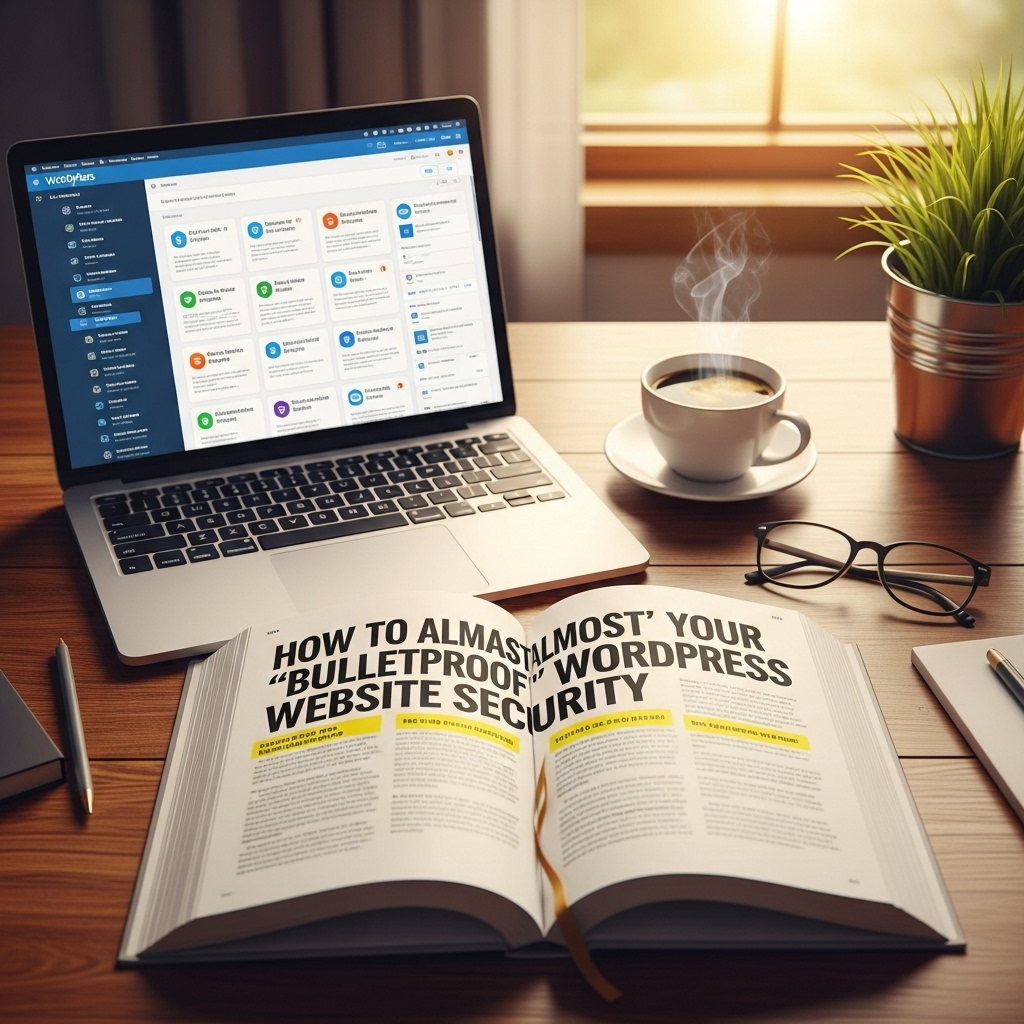
How to Almost “Bulletproof” Your WordPress Website Security
Essential Steps to Protect Your Site from Threats and Vulnerabilities

1. Keep WordPress Updated
- Regular Updates: Always keep your WordPress core, themes, and plugins updated to the latest versions to patch security vulnerabilities.
2. Use Strong Passwords
- Complex Passwords: Create strong, unique passwords for your admin account and encourage users to do the same.
- Password Managers: Utilize password managers to generate and store complex passwords securely.
3. Implement Two-Factor Authentication (2FA)
- Add an Extra Layer: Enable 2FA for your login process, requiring a second form of identification, such as a text message or authentication app.
4. Limit Login Attempts
- Prevent Brute Force Attacks: Use plugins to limit the number of login attempts, blocking users after a certain number of failed tries.
5. Choose a Reliable Hosting Provider
- Secure Hosting: Select a reputable hosting provider that prioritizes security and offers features like SSL, firewalls, and regular backups.
6. Use Security Plugins
- Install Security Tools: Utilize security plugins such as Wordfence or Sucuri to monitor your site, scan for malware, and enhance security features.
7. Regular Backups
- Automated Backups: Schedule regular backups of your website to ensure you can quickly restore it in case of an attack or data loss.
8. Disable Directory Listing
- Hide File Structure: Prevent users from viewing your directory structure by disabling directory listings in your server configuration.
9. Implement a Web Application Firewall (WAF)
- Filter Malicious Traffic: Use a WAF to protect your website from common threats and attacks, filtering out harmful traffic before it reaches your site.
10. Secure Your wp-config.php File
- File Protection: Move your wp-config.php file to a non-public directory and restrict access to it to protect sensitive information.
11. Set Proper File Permissions
- Limit Access: Ensure your file permissions are set correctly to restrict access to important files and directories on your server.
12. Monitor User Activity
- Track Changes: Keep an eye on user activity by using plugins that log changes, helping you spot any unauthorized actions.
Conclusion
By implementing these strategies, you can significantly enhance the security of your WordPress website and protect it from potential threats. Regularly review your security measures to stay ahead of evolving risks.
